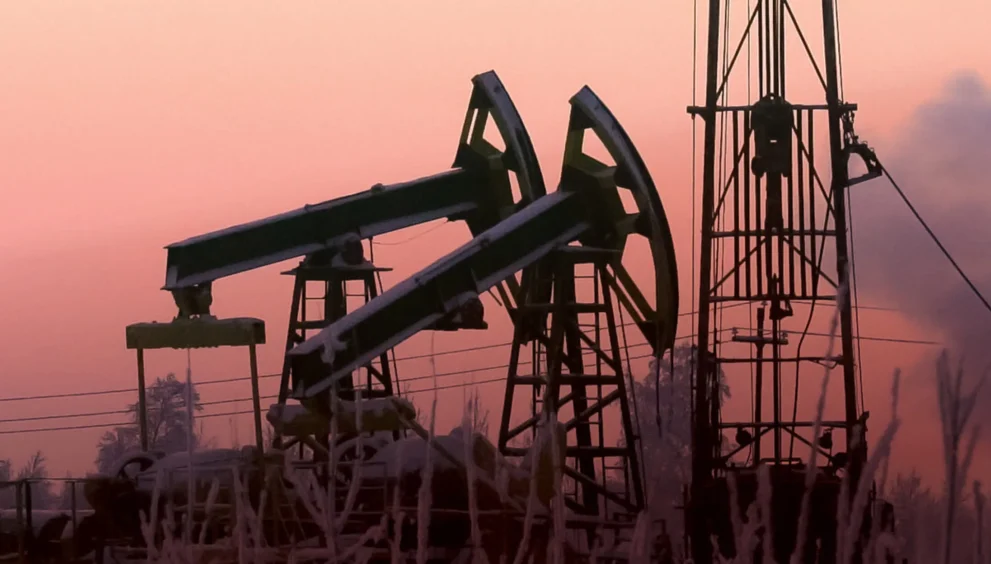Oil and Gas Industry Faces Supply Surge and Transition Pressures in 2025

Oil and Gas Industry Faces Supply Surge and Transition Pressures in 2025
Houston, USA
The global oil and gas industry is navigating a complex landscape in 2025, marked by a projected supply surplus, volatile prices, and an accelerating shift toward sustainable energy solutions. Major companies are adapting through technological innovation, strategic investments, and cost-cutting measures, while geopolitical tensions add uncertainty. Here’s a detailed look at the key developments shaping the sector.
Oversupply Weighs on Oil Prices
Global oil production is expected to reach 105.8 million barrels per day (b/d) in 2025, driven by OPEC+’s decision to ease production cuts by 548,000 b/d since August, alongside robust output from non-OPEC producers like the U.S., Brazil, and Canada. The International Energy Agency forecasts a 1.7 million b/d surplus by early 2026, pushing Brent crude prices down from $68 per barrel in August 2025 to around $50 per barrel in Q1 2026. Weakening demand, particularly in China where economic growth slowed to 4.6% in Q2 2025, is exacerbating price pressures, impacting revenue for major producers.
LNG Market Braces for Glut
The liquefied natural gas (LNG) market is seeing significant growth, with global export capacity rising, led by a 53% increase in U.S. LNG exports (6.0 billion cubic feet per day) by the end of 2026. New facilities, such as Venture Global’s Plaquemines LNG plant, are driving this expansion. However, global LNG demand is projected to peak at 425 billion cubic meters in 2025 before declining slightly through 2030, particularly in emerging Asian markets facing economic and infrastructure challenges. Europe’s 23.6% surge in LNG imports in the first half of 2025 reflects efforts to diversify away from Russian gas, but a looming glut could depress prices by 2026.
Geopolitical Tensions Disrupt Markets
Geopolitical risks are injecting volatility into the oil and gas markets. Drone attacks on key infrastructure, including refineries, have caused temporary price spikes, with Brent crude jumping 5% in June 2025 following disruptions. The Strait of Hormuz, handling 21% of global petroleum liquids and significant LNG flows, remains a flashpoint, with potential disruptions threatening supply stability. Sanctions and trade disputes, including U.S. tariffs on certain oil imports, are complicating global trade flows, particularly for major exporters reliant on Asian markets.
Energy Transition Gains Traction
The industry is under increasing pressure to align with global sustainability goals. Investments in carbon capture, utilization, and storage (CCUS) are expanding, with projects like ExxonMobil’s LaBarge facility capturing 8 million metric tons of CO2 annually. Natural gas is positioned as a transitional fuel, with global demand rising 1.7% in 2025, driven by coal-to-gas switching in Asia. Companies like Shell and TotalEnergies are allocating 20–25% of their 2025 budgets to renewables, including solar-powered LNG facilities, though only 43% of industry executives surveyed by Deloitte are actively pursuing CCUS due to cost and regulatory barriers.
Petrochemical Demand as a Growth Driver
The petrochemical sector is a bright spot, with demand for natural gas liquids (NGLs) projected to drive 18–20% of global oil demand by 2040. Companies like Saudi Aramco and China Petroleum & Chemical Corporation are expanding petrochemical capacities, with new plants targeting 2 million metric tons of ethylene annually by 2027. AI-driven process optimization has reduced refining costs by 7–10% at major facilities in 2024, enhancing competitiveness. However, supply chain disruptions and competition from low-cost producers pose challenges.
Technological Innovation Enhances Efficiency
Technology is transforming the industry, with AI, digital twins, and IoT improving operational efficiency. Equinor’s use of AI in seismic imaging has boosted recovery rates by 8% in select fields, while predictive maintenance has cut downtime by 12–15% for firms like BP. Blockchain is being adopted for supply chain transparency, particularly in LNG trading, reducing transaction costs by 5% in 2024. These advancements are critical as companies navigate a competitive market and declining oil prices.
Industry Consolidation and Workforce Shifts
Mergers and acquisitions (M&A) are accelerating, with 70% of oil and gas companies planning deals in 2025 to access technology and optimize operations, according to GlobalData. Major firms like Chevron and ConocoPhillips are streamlining portfolios, with $10 billion in asset sales completed in 2024. Layoffs continue, with 10,000 jobs cut globally in 2024–2025, though retraining programs are transitioning 5,000 workers to renewable energy roles by 2027. Capital discipline remains a priority, with the industry distributing $213 billion in dividends and $136 billion in share buybacks in 2024.
Outlook for 2025
The oil and gas industry in 2025 is at a turning point, balancing oversupply risks and geopolitical uncertainties with opportunities in LNG, petrochemicals, and sustainability. Companies are leveraging technology and strategic investments to remain competitive, but the projected price decline and global glut pose challenges. As the sector aligns with energy transition goals, its ability to adapt will shape the global energy landscape through 2030.
- Oil Industry







